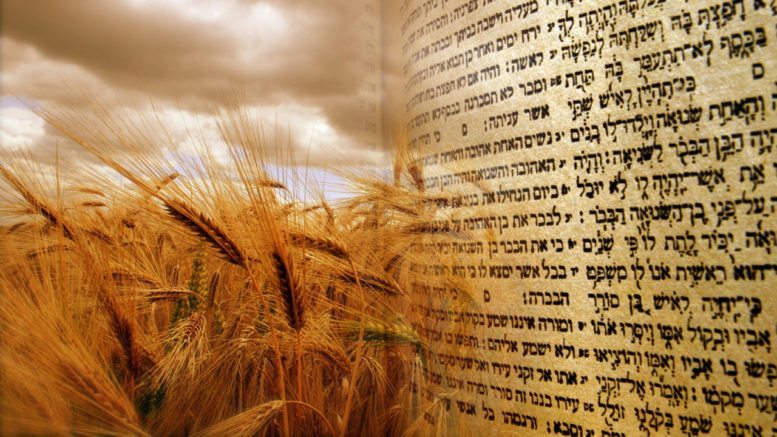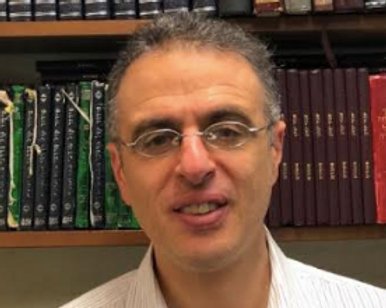Shabu'ot: The Holiday of Many Names

If you look through the Torah, you will find that Shabu’ot is actually a holiday of many names. The holiday is mentioned five times in the Torah. The first time that it is mentioned is in Perashat Mishpatim and it is referred to as Hag HaQassir (the holiday of the harvest). This name highlights the agricultural dimension of the holiday as the Ibn ‘Ezra explained that Shabu’ot is the beginning of the wheat harvest which was preceded by Pesah which is the beginning of the barley harvest.
The Hizquni explained that even though Pesah also coincides with a harvest, which is actually the first harvest, the Torah still calls Shabu’ot the holiday of the harvest. This is because the wheat harvest is the main harvest, as wheat is a more important grain than barley. The Ramban explained that one purpose of the holidays is to thank HaShem for providing us with food which is why holidays coincide with important points in the agricultural cycle. Pesah is the first harvest, Shabu’ot is the main harvest and Sukkot is the final harvest.
Later on in the book of Shemot, in Perashat Ki Tisa, the Torah calls the holiday by it’s commonly known name; Shabu’ot (Weeks). The name Shabu’ot refers to the fact that the holiday is the conclusion of a seven-week period. The Torah commanded us to count from harvest to harvest, which is also from the time that we left Egypt to when we received the Torah. So the name Shabu’ot includes both the agricultural and the spiritual dimensions of the holiday. Interestingly, Shabu’ot is the only name that the Torah uses twice, as in the book of Debarim, in Perashat Re-eh, the Torah calls the holiday, Shabu’ot, once again.
The third time that the Torah discusses the holiday it does not refer to it by any name. In the book of VaYiqra, in Perashat Emor, the holiday is referred to simply as a MiqraQodesh which is a generic name for a holiday. The Rashbam explains the term Miqra Qodesh as a time designated for holiness. The Ramban explains it as a day when all are called to gather together to observe a holiday. In Emor it is presented as the holiday after the conclusion of the count. Observe Pesah and begin counting. After the count observe a holiday which is referred to by name in other parts of the Torah.
The fourth time that the Torah mentions the holiday is in the book of BaMidbar in Perashat Pinehas. There it is called Yom HaBikkurim, the day of the first fruits. One does not bring any first fruits to the Bet HaMiqdash before the day of Shabu’ot. On the day of Shabu’ot the first wheat is brought to the Miqdash in the form of two loaves of bread, which were Hamess and were known as Sh’teHaLehem. The Torah called this offering a MinhahHadashah (a new offering). They took approximately 44 lbs. of wheat and they ground it and sifted it. Then they took about nine and a half lbs from that wheat and baked it into two rectangular loaves. Each loaf was 21 inches long, one foot wide and about three inches high. They were prepared on the day before the holiday and they were waved in the Miqdash on the day of Shabu’ot. On that day a series of animal offerings were made and then the Kohanim ate the bread until midnight that night. So since this was the first day that wheat was brought in the Miqdash (since the new harvest), and it was also the first day to bring the first fruits from all of the seven species associated with the Land of Israel (olives, dates, grapes etc.), the Torah also called this holiday Yom HaBikkurim.
The Torah calls the holiday Hag HaQassir, Shabu’ot, Yom HaBikkurim and in one place no name at all. However, when our Rabbis refer to this holiday they do not use any of the Torah’s names but rather they refer to it as ‘Asseret. Like they said “’Asseret Yom SheNitt’nah Bo Torah” (‘Asseret was the day that the Torah was given) “’AsseretShe-Hee ‘Onat Melakhah Ena Ela Yom Ehad” (‘Asseretwhich is a time of work[in the field] is only one day). What does the word ‘Asseret mean? The Gemara says that it means ‘Assurin Ba’Asiyat Melakhah (a stoppage of work) Likewise the Ibn ‘Ezra explains that it’s a day that one does not engage in worldly matters. And the Rashbam also explains that its refraining from performance of work. Interestingly the Torah uses the word ‘Asseret for the day after Sukkot (Shemini ‘Asseret) and for the seventh day of Pesah.
But the Torah does not use the word ‘Asseret to describe Shabu’ot. In fact, there’s a Midrash that states, “The ‘Asseret of Sukkot was supposed to be 50 days after Sukkot like the Asseret after Pesah, HaShem said, it’s winter time, since they are here they should do Asseret."
From this Midrash it seems that the Hakhamim saw Shabu’ot as an added day to Pesah like Shemini ‘Asseret is an added day to Sukkot even though it doesn’t have any of the observances of Sukkot. Likewise Shabu’ot, which is connected to Pesah through the counting of the ‘Omer, is a Yom Tob without any of the Pesah observances. So the Rabbis alluded to this connection by calling Shabu’ot“’Asseret” which is reminiscent of Shemini ‘Asseret. The significance of this connection is that the purpose of leaving Egypt was to receive the Torah. The pinnacle of that experience was Matan Torah. So all of the observances of Pesah and the counting of the ‘Omer are to prepare ourselves for that special day. When we reach that day we have been prepared, and we don’t need any special rituals to observe the holy day. It’s just a holy day of Yom Tob with no specific rituals. Similarly, the repentance process begins with the month of Elul and leads into Rosh HaShanah and ten days of repentance including Yom Kippur followed by all of the observances of Sukkot. That whole process then brings us to that final day, Shemini‘Asseret, that does not require any special observances. It is a holy day of Yom Tob that we had prepared for on the previous fifty days. Prior to Shabu’ot there is one day of Pesah and forty-nine days of the ‘Omer, so Shabu’ot is the 51st day. In Elul there are 29 days and then 21 days of Tishri (a total of 50 days) until Shemini ‘Asseret which is the 51st day. So ‘Asseret is a day of Yom Tob after a preparation process. It does not require any specific rituals as we were already prepared spiritually with the rituals of the previous days. It’s the pinnacle of the spiritual journey of the previous fifty days.
So we have Shabu’ot as the holiday of the harvest, as the conclusion of a seven-week period from leaving Egypt to receiving the Torah, as the first day to bring Bikkurim, and as simply a Miqra Qodesh, or as our Hakhamim call it, an ‘Asseret. A special day that does not need any specific rituals, as the rituals of the previous days have prepared us spiritually for this day which is the culmination of a long spiritual process.
Mr. Morris Arking teaches Halachot and classes in the community for the past 15 years, including a daily Halachah class in Bnei Yosef in Brooklyn, NY.







